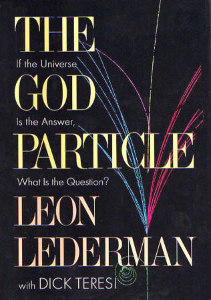 First edition cover | |
| Author | Leon M. Lederman, with Dick Teresi |
|---|---|
| Language | English |
| Subject | Physics |
| Publisher | Dell Publishing |
Publication date | 1993 |
| Publication place | United States |
| Media type | Print (Hardback & Paperback) |
| ISBN | 0-385-31211-3 (Original hardcover) |
The God Particle: If the Universe Is the Answer, What Is the Question? is a 1993 popular science book by Nobel Prize-winning physicist Leon M. Lederman and science writer Dick Teresi.
Contents
The book provides a brief history of particle physics, starting with the pre-Socratic Greek philosopher Democritus, and continuing through Isaac Newton, Roger J. Boscovich, Michael Faraday, and Ernest Rutherford and quantum physics in the 20th century. [1] [2] [3] [4]
Lederman explains in the book why he gave the Higgs boson the nickname "The God Particle":
This boson is so central to the state of physics today, so crucial to our final understanding of the structure of matter, yet so elusive, that I have given it a nickname: the God Particle. Why God Particle? Two reasons. One, the publisher wouldn't let us call it the Goddamn Particle, though that might be a more appropriate title, given its villainous nature and the expense it is causing. And two, there is a connection, of sorts, to another book, a much older one...
— p. 22 [5]
In 2013, subsequent to the discovery of the Higgs boson, Lederman co-authored, with theoretical physicist Christopher T. Hill, a sequel: Beyond the God Particle which delves into the future of particle physics in the post-Higgs boson era. This book is part of a trilogy, with companions, Symmetry and the Beautiful Universe and Quantum Physics for Poets (see bibliography below).
